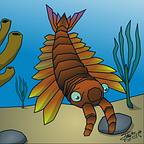The Beauty of Sargassum
Floating ecosystems that give life to the open sea
What is Sargassum?
The genus Sargassum (class Phaeophyceae), is widely known for its species of floating algae.
Some species are holopelagic; that is, they reproduce vegetatively and never attach to the seafloor during their life cycle.
They are usually brown or dark green in color and have a rough, sticky texture with a robust but flexible body. They also have specialized buoyant, berrylike gas-filled bladders that allow them to float in the open sea.
Sargassum forms clumps with sizes that can range from fist-sized to massive rafts tens of meters in diameter that can reach more than 100 miles.
Christopher Columbus (or one of the Portuguese sailors who accompanied him), supposedly gave the name when he encountered Sargassum in 1492.
The term “sargaço,” probably derives from “argaço” (via “algaço,” used in ancient documents to designate algae), and from the Latin Salix (willow trees known colloquially as “sarga” morphologically similar to “sargasso”).
An essential component of marine ecosystems
The holopelagic Sargassum species can form floating rafts that drift with ocean currents and harbor a unique and dynamic ecosystem [1].
These floating ecosystems are mainly based on two species of Sargassum: S. natans and S. fluitans.
The floating rafts accumulate huge amounts of nutrients and produce energy that is used by marine food webs. Due to this, they are an important habitat that provides shelter and food for an incredible amount of marine life.
Over 127 species of fishes, four species of sea turtles, 145 invertebrate species, and 658 bacterial and archaeal families, distributed across 350 orders and 57 phyla, have been reported that use Sargassum (as a temporary refuge or permanent residence) [1, 2, 3, 4].
Ten species are known to be endemic to the Sargassum habitat; that is, they are highly adapted to the Sargassum and can only be found living in it [3]. These organisms have specialized patterns and colors that allow them to camouflage themselves.
Sargassum is particularly important for many species that use it as a nursery for the early stages of their life cycles, such as sea turtles and pelagic fish economically important (i.e., Coryphaena hippurus, Caranx spp., Seriola spp., and Xiphius gladius) [3, 5, 6].
Since Sargassum rafts can extend for miles across the ocean and are high-productivity ecosystems, they can be seen as islands of life among the open-ocean environment (oligotrophic), that constitute important stopovers on the migratory routes of endangered humpback whales, seabirds, and sea turtles [7, 8].
The Sargasso Sea and the Bermuda Triangle
Since Sargassum species can survive a wide range of temperatures and salinity, they occur in different marine ecosystems of any tropical or temperate ocean in the world.
However, they are particularly abundant within a region of the Atlantic Ocean called the “Sargasso Sea”. It is the only sea that has no land borders and is bounded by four currents that form an ocean gyre [3].
The Sargasso Sea has fascinated people since the time of Christopher Columbus, as the source of myths and legends that constitute an important part of Bermuda’s maritime history and cultural heritage.
For example, it is associated with the famous “Bermuda Triangle”, a region where planes and ships apparently disappeared under mysterious circumstances.
In the past, these rumors fueled myths about the Atlantic Ocean that this area was teeming with “ensnaring seaweeds” [3].
Global importance of the Sargasso Sea
Currently, the importance of the Sargasso Sea stems from diverse factors, primarily related to its role in global ocean and earth system processes, its biological relevance, and its socio-economic and cultural values [3].
Since the Sargasso Sea is the only area of the Sargassum’s range, where it grows in the truly open ocean and provides a rare form of valuable habitat in deep open water far from land.
The Sargassum ecosystems in this region are known as “The golden floating rainforest of the Atlantic” because they are vital to the survival of many species of economic importance to Bermuda and countries on both sides of the North Atlantic.
The biological relevance of the Sargasso Sea is not only restricted to commercially important species. It also provides essential nursery habitats for many iconic marine species and endangered eel species from around the globe, especially from the U.S., Canada, Europe, and North Africa.
Due to their ecological importance, the Sargassum floating rafts have been designated as an “essential fish habitat”[8].
As a result of its high primary productivity, the Sargasso Sea also plays a key role in global ocean sequestration of carbon.
Environmental issues
A recent global analysis of human impacts on marine ecosystems showed that the Sargasso Sea has sustained moderate to high impacts over time [9].
Human activities impact the Sargasso Sea in a variety of ways, such as over-fishing, shipping, pollution, and even exploitation of Sargassum species for commercial-scale extraction [3].
Because the surrounding currents trap water in the core of the Sargasso Sea for long periods of time, this region is naturally vulnerable to pollution, especially plastics.
Marine animals can become entangled in plastic debris and die from suffocation and strangulation. Also, if they eat plastics, they can compromise their nutrition and accumulate contaminants (bioaccumulation), which will travel through the food web.
Together, all previously mentioned factors have turned the Sargasso Sea a target for international policies, focused on its management, and conservation [3, 7].
